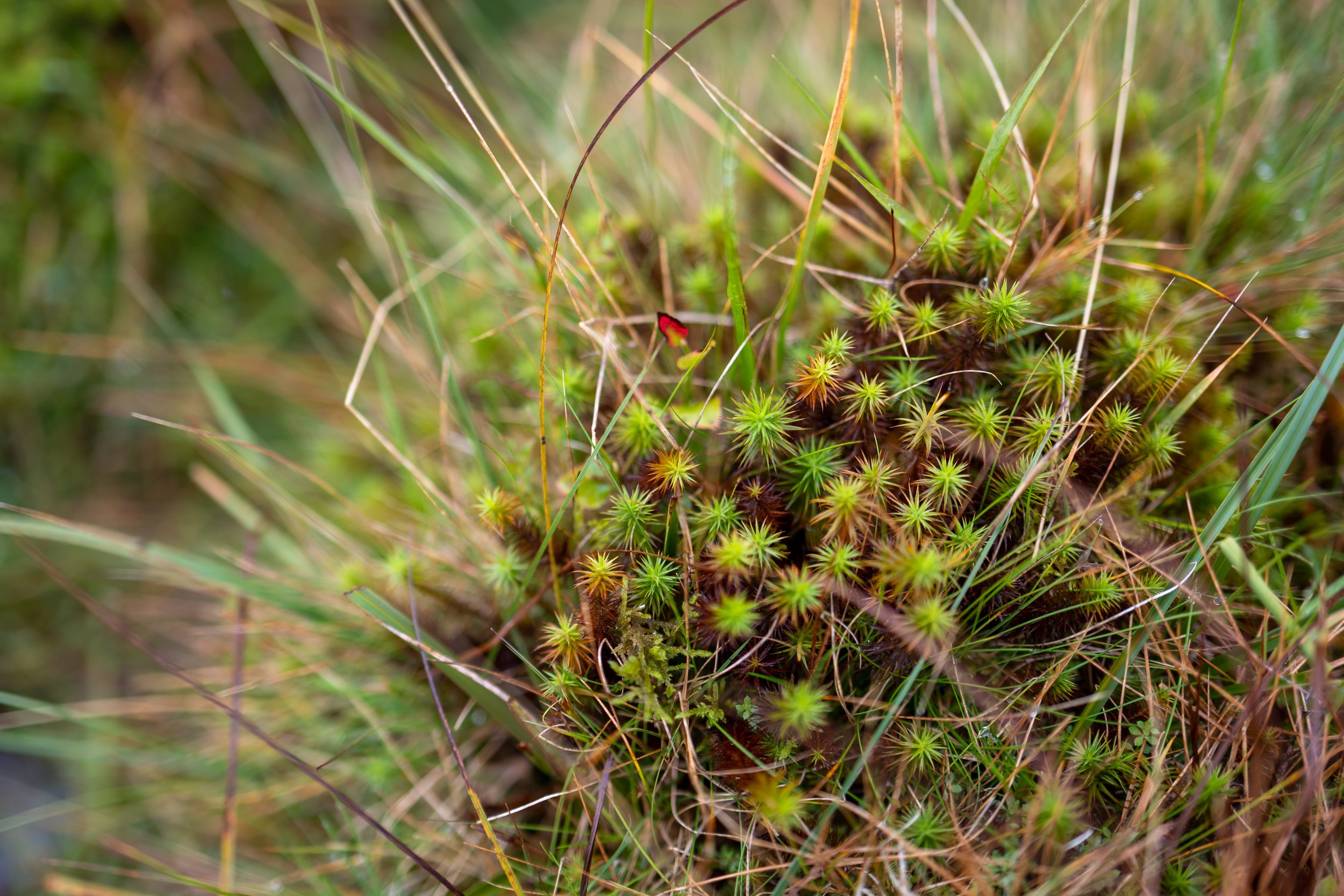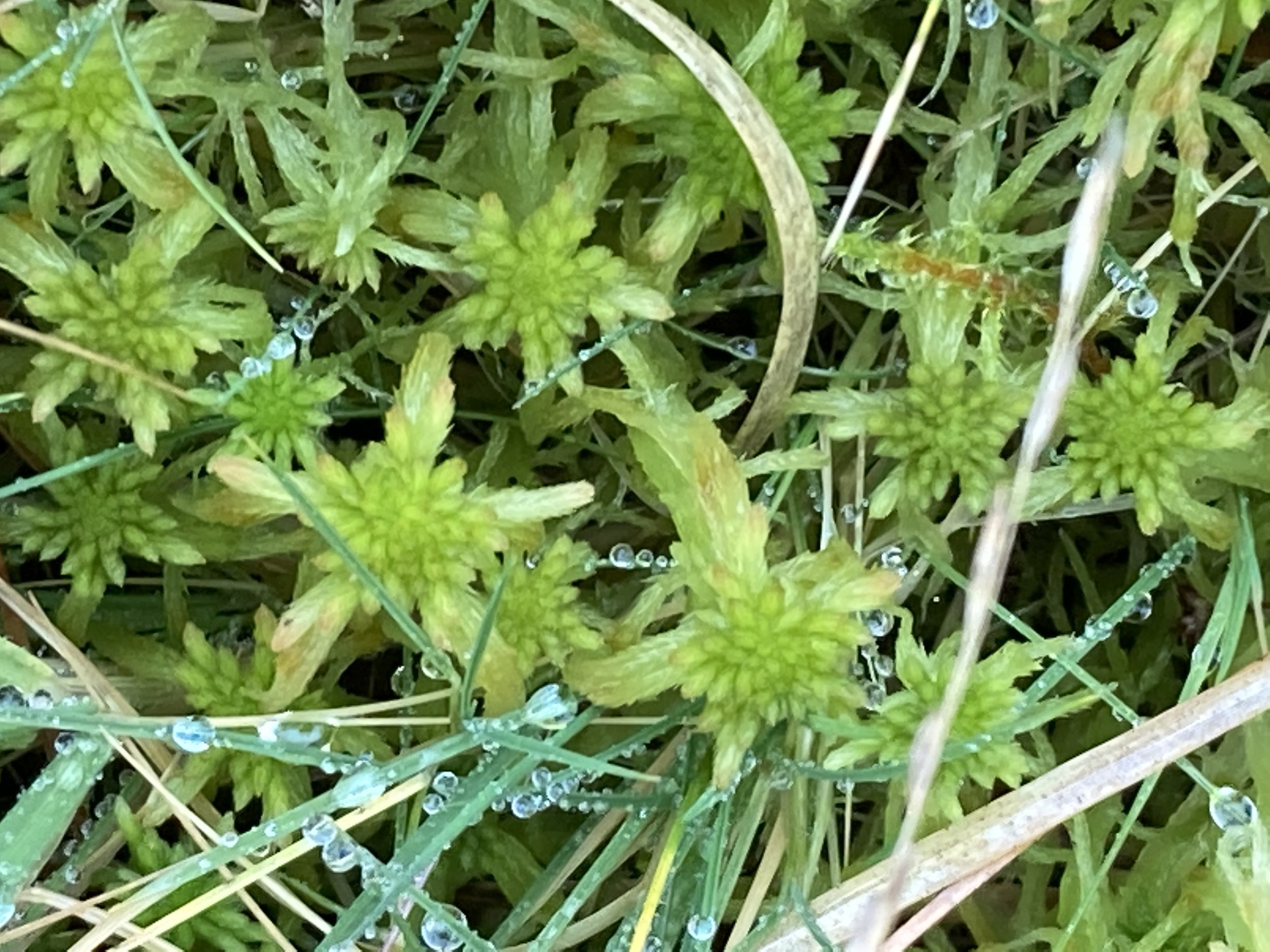
Mossy facts and information
Not that long ago, most of the Art and Energy team didn’t know much about moss, but the more we find out the more amazed we are by this easily-overlooked plant.
Here are some of the information we’ve learnt so far.
Now, let’s go on a mossy journey of discovery together!
More about moss
Mosses are part of a group of plants called Bryophytes. Along with other tiny plants called liverworts and hornworts, there are over 1000 species in the UK.
They have survived on the planet for 450 million years through extreme climate changes. We have a lot to learn from them. They are stronger than they first appear.
Mosses are often overlooked and ignored, yet they are all around us. This group of plants have incredible abilities to thrive in small spaces on roofs, pavements, deserts and forests, by the sea and up mountains. Worldwide there are more than 20,000 species.
Mosses make the most of their different environments, growing and spreading when conditions are right - when there is plenty of water. They have male and female growths for fertilisation. Spores are released from the male papery capsule or sporophyte on a thin stalk. Mosses also have special vegetative ways to grow, so that in some circumstances they produce clones.
They are scraped off surfaces for being green and damp, slimy and without flowers. When you look closely, and with a hand lens, you will be astonished at their complexity and beauty.
As most mosses are green, they photosynthesise to gain energy for growth and do this across -15ºC to 40ºC. Their leaves are only one cell thick and so interesting small projections and patterns of growth are designed to protect and prevent desiccation.
They connect to the ground with rhizoids, fine cellular hair like structures, not roots. This means the whole plant is able to absorb the water and other nutrients it needs. They can also more easily find resting places, where other plants find it difficult such as a rocky or concrete surface.
Mosses support all life - our climate superhero
Mosses absorb and hold rain water and nutrients in their spongey leafy structure and, in so doing, soil beneath develops and becomes humid too. They create an environment where other living organisms can begin to thrive above and below ground.
Within the moss lives a tiny moss-piglet, or tardigrade, barely visible to the naked eye, it looks other worldly. These tiny creatures go about their everyday life in their giant mossy forest world. Tardigrades are hardy creatures, and humans have tested this capacity in outer space.
As mosses grow, so the conditions for larger plants and trees to take hold emerge, and with them come insects, amphibians, mammals and birds to live in marshes, woodlands, grasslands and other ecosystems, life as we know it now.
Mosses are used by other animals for food, shelter and insulation. The film of water in and around the moss creates a mini habitat in itself for nematodes and bugs and springtails. Birds not only eat these moss mites, they also use moss in nest building.
Mosses are highly significant in combatting the impacts of the climate emergency, they protect from extreme weathers, they absorb air pollutants, they are the first plant to grow on land damaged by wild fires. They stabilise the soil and create the environment for microbes, bacteria and fungi to reconstitute the habitat for larger plants to grow back.
So much to learn about and from mosses - our climate superhero!
Sphagnum moss to peat
Sphagnum mosses are particularly special mosses to bogs and wetlands. They have a pom-pom leafy top to their long strand. They can store many times their weight in water. There are about 30 species which form mounds and mosaic carpets of growth with other mosses, lichens and vascular plants.
All mosses sequester carbon, soaking it up as carbon dioxide, turning it into carbohydrates, through photosynthesis. Sphagnum moss, sometimes referred to as bog moss, becomes peat. As the moss grows in the light, so the leafy plant and rhizome is pressured down below without oxygen and slowly, in its anaerobic wet reduction, turns into carbon rich peat. Sphagnum moss lays down about 1mm of peat per year, so that 10 cm is the equivalent of 1000 years, 1m is 10,000 years of climate history below your feet.
A tiny action that you could do is to check that you don’t use peat in your garden. Once it is dug up, it has gone for generations, if not for ever.
Sphagnum moss has absorbent, antibacterial qualities, and was used in the First World War in bandages, it has also been used for nappies and sanitary wear.






Art and Energy hosted a series of online talks all about mosses, mossy habitats and wildlife and moorland projects and stories.
Watch our series of talks here:
Have you enjoyed learning a little more about mosses? Then you may like to….
Dive deeper in our publication ‘Be More Moss: A Mossellany of Questions for Life’, packed full of facts and quotes about marvellous mosses, with activity pages and questions to ponder.
Get creative with Mossy Activities & Makes.
Join us at a Mossy event online or in-person.
Find out more about Peatland restoration.





